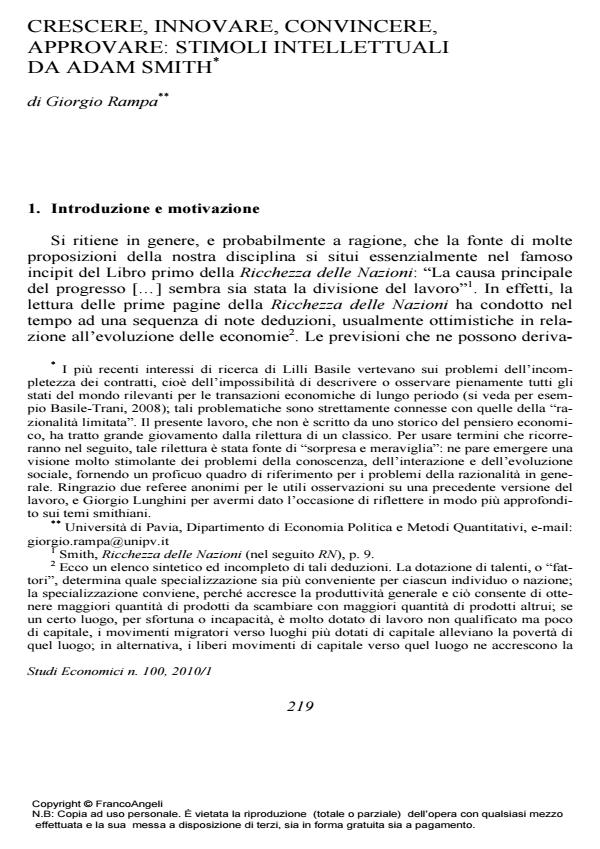Crescere, innovare, convincere, approvare: stimoli intellettuali da Adam Smith
Titolo Rivista STUDI ECONOMICI
Autori/Curatori Giorgio Rampa
Anno di pubblicazione 2010 Fascicolo 2010/100
Lingua Italiano Numero pagine 16 P. 219-234 Dimensione file 622 KB
DOI 10.3280/STE2010-100012
Il DOI è il codice a barre della proprietà intellettuale: per saperne di più
clicca qui
Qui sotto puoi vedere in anteprima la prima pagina di questo articolo.
Se questo articolo ti interessa, lo puoi acquistare (e scaricare in formato pdf) seguendo le facili indicazioni per acquistare il download credit. Acquista Download Credits per scaricare questo Articolo in formato PDF

FrancoAngeli è membro della Publishers International Linking Association, Inc (PILA)associazione indipendente e non profit per facilitare (attraverso i servizi tecnologici implementati da CrossRef.org) l’accesso degli studiosi ai contenuti digitali nelle pubblicazioni professionali e scientifiche
In Smith’s opinion any social order (languages, theories, social norms) stems from a co− evolution process. Evolution is fostered by "surprise and imagination", i.e. dissatisfaction with some existing order; however imagination can be successful if approved by the community; approval depends on uses, customs, moods. Hence, there is no guarantee that evolution is progressive. Self−reference and the mechanisms of imagination imply that evolution entails non−linear relations: hence there does not exist a unique path of development, nor one which depends uniquely on "fundamentals". These Smith’s key notions - coming from the History of Astronomy, the Formation of Languages and the Theory of Moral Sentiments - allow not only a better appreciation of Smith contribution to the economics of exchange, innovation and evolution, beyond the first pages of the Wealth of Nations, but also an interpretation which differs deeply from that usually adopted by modern economics.
Parole chiave:Adam Smith, social system, co-evolution
Jel codes:O10, O31, D83, B31
- Valore | prezzo di mercato, Sociologia | Economics Franco Rositi, in Quaderni di Sociologia /2018 pp.7
DOI: 10.4000/qds.2015
Giorgio Rampa, Crescere, innovare, convincere, approvare: stimoli intellettuali da Adam Smith in "STUDI ECONOMICI " 100/2010, pp 219-234, DOI: 10.3280/STE2010-100012